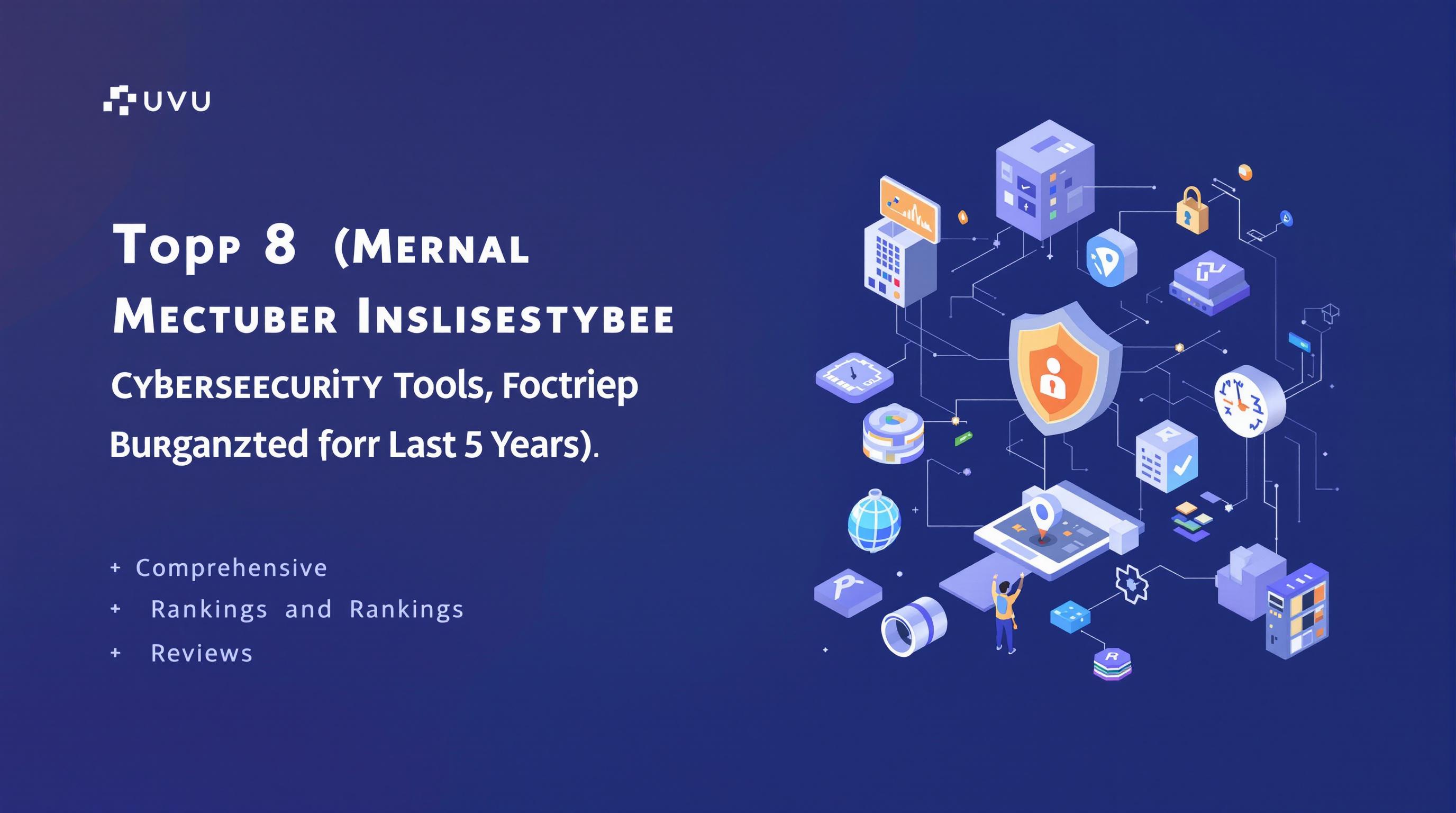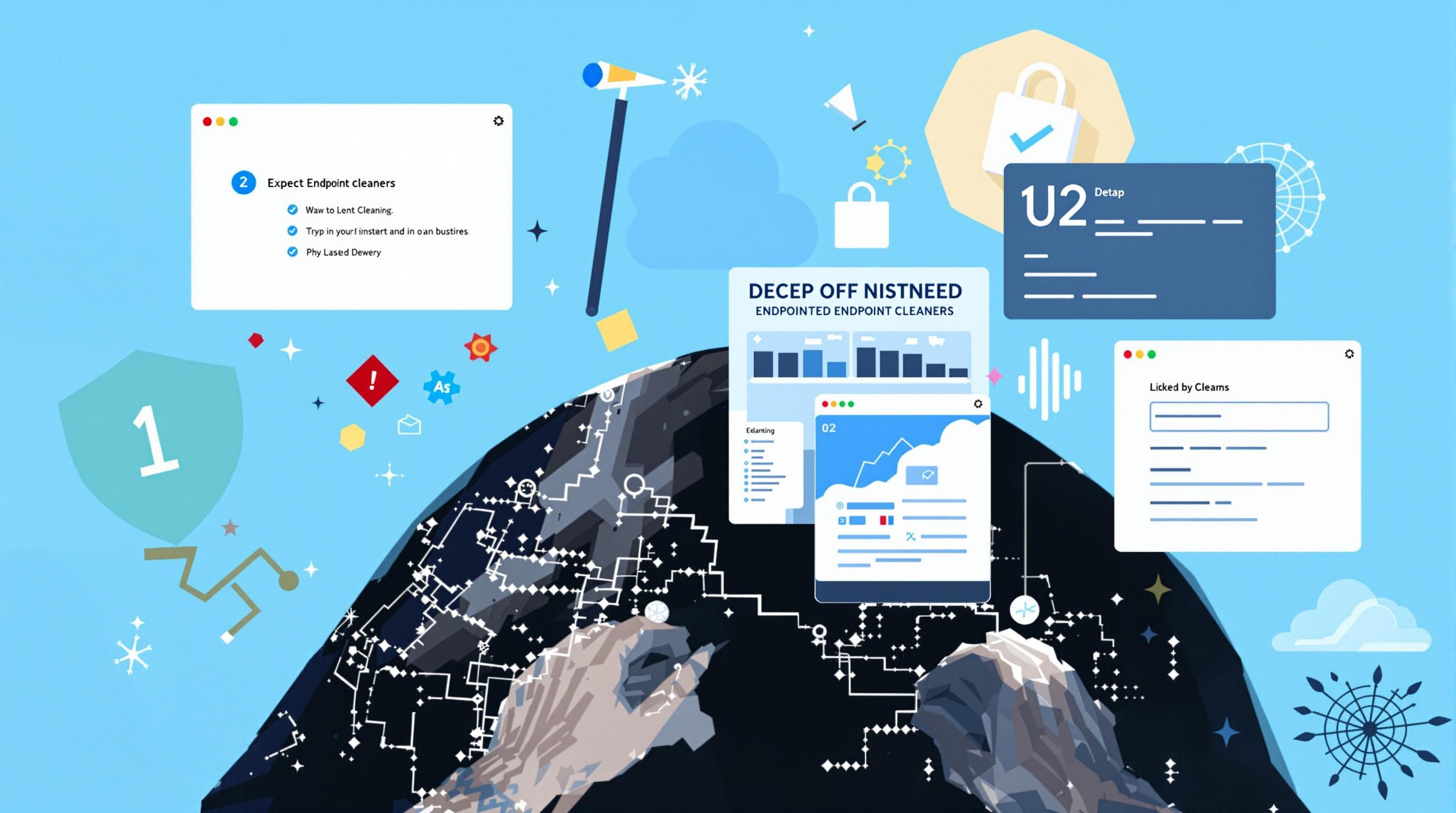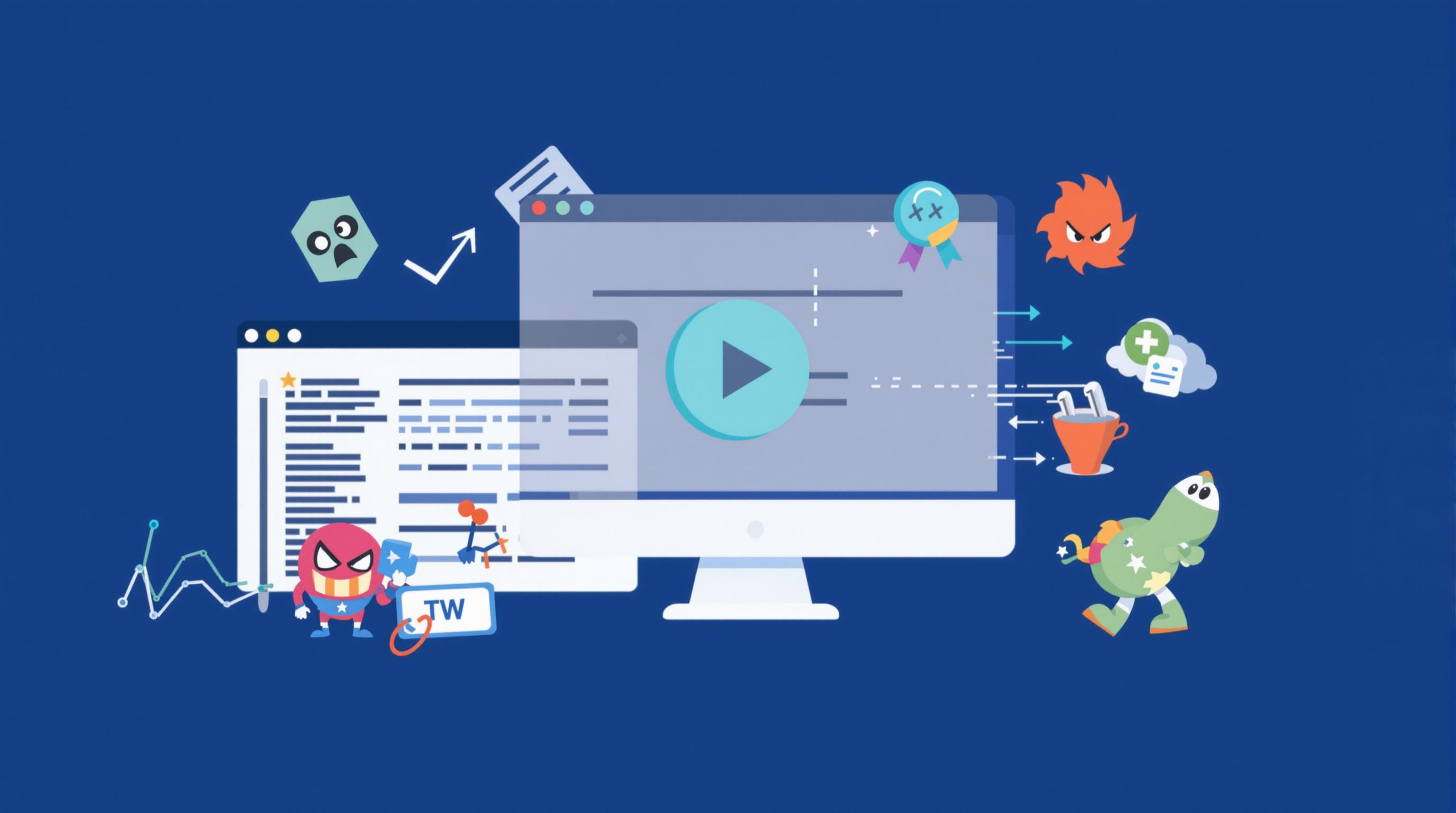Related Articles
- Unveiling the Silent Effects of Malware Residue on IoT Devices and What It Means for Your Connected Home Security
- Top 6 Game-Changing Email Security Suites Released Since 2019 That Actually Stop Cyber Trickery
- The Hidden Impact of AI-Driven Voice Assistants on Your Device’s Safety: Risks Nobody Talks About
- Top 6 Stealth Encryption Products Redefining Data Privacy You Haven’t Heard About Since 2019
- Exploring the Influence of Wi-Fi Radiation on Human Sleep Patterns and Cognitive Health in Modern Living
- Top 8 Stealth Malware Cleaners from the Past 5 Years That Outsmart Evasive Threats
Top 8 Next-Gen Cybersecurity Tools Launched in the Last 5 Years: Comprehensive Rankings and Reviews
Top 8 Next-Gen Cybersecurity Tools Launched in the Last 5 Years: Comprehensive Rankings and Reviews
Top 8 Next-Gen Cybersecurity Tools Launched in the Last 5 Years: Comprehensive Rankings and Reviews
In the rapidly evolving digital landscape, cybersecurity remains a top priority for organizations and individuals alike. The surge in sophisticated cyber threats has necessitated the development of next-generation tools designed to provide robust protection. Over the last five years, numerous innovative solutions have emerged, leveraging AI, machine learning, and advanced analytics to detect and mitigate cyber risks effectively. This article explores the top eight cybersecurity tools launched in this period, offering comprehensive rankings and reviews to help security professionals make informed choices.
Each tool listed below has been evaluated based on its technology, usability, detection capabilities, and overall impact on security postures. Beyond traditional antivirus and firewall systems, these next-gen solutions focus on predictive analytics, automated response, and seamless integration into existing IT frameworks. Their development aligns with the increasing need for proactive defense mechanisms capable of addressing zero-day exploits, ransomware, insider threats, and more.
As cyber threats grow increasingly complex, selecting the right tool becomes critical. The following sections detail the features, advantages, and potential drawbacks of each cybersecurity solution recently introduced to the market. These tools represent the forefront of innovation, combining cutting-edge technology with practical security applications.
1. CrowdStrike Falcon
CrowdStrike Falcon is a cloud-native endpoint protection platform launched with next-gen capabilities that emphasize AI-powered threat detection and response. Since its introduction, it has gained popularity due to its lightweight agent and real-time analytics. The platform integrates endpoint detection and response (EDR) with antivirus functionalities and threat intelligence, making it a comprehensive solution for enterprises.
The tool’s AI-driven approach allows it to recognize and mitigate advanced persistent threats (APTs) and fileless malware by monitoring behavioral patterns instead of relying solely on signature databases. It also features automated incident response mechanisms that reduce the burden on security teams. Its cloud architecture ensures scalability and rapid deployment across global infrastructures, critical for large organizations.
Industry reviews, including those from Gartner and Forrester, consistently rank CrowdStrike Falcon as a leader in endpoint security due to its detection accuracy and ease of management. However, some users note that advanced configuration requires technical expertise, and licensing costs can be higher than traditional antivirus solutions (source: Gartner Peer Insights, 2023).
2. Darktrace Enterprise Immune System
Darktrace’s Enterprise Immune System launched during the last five years introduces self-learning AI that models the normal pattern of network activity to detect anomalies. It draws inspiration from the human immune system, offering continuous and autonomous monitoring of an organization’s digital ecosystem. This novel approach enables the early detection of insider threats, ransomware, and unconventional attack vectors.
Its AI engine adapts dynamically without prior knowledge of threats, making it particularly effective in unknown or rapidly evolving attack scenarios. The tool provides visual threat dashboards and autonomous response options, helping reduce mean time to detect (MTTD) and mean time to respond (MTTR). It supports hybrid environments and cloud infrastructures, which is crucial as companies adopt multi-cloud strategies.
While the tool’s innovative AI is highly praised, some organizations report false positives during initial deployment phases, which may require tuning. Nevertheless, its effectiveness in advanced threat detection has earned recognition from cybersecurity analysts and inclusion in multiple “must-have” security solutions lists (source: Forrester Wave, 2022).
3. SentinelOne Singularity Platform
Officially released within the last five years, the SentinelOne Singularity Platform presents an autonomous AI-driven cybersecurity solution focusing on endpoint protection, detection, and automated remediation. Its single-agent architecture simplifies deployment while providing real-time threat hunting and continuous monitoring.
Singularity integrates behavioral AI models that identify both known and unknown threats, including those leveraging fileless malware and lateral movements. Its automated rollback capability enables rapid recovery from ransomware attacks, minimizing operational downtime. The platform also provides transparency through detailed forensic data and threat lineage, which aids incident response teams.
Trusted by numerous Fortune 500 companies, SentinelOne has received accolades for scalability and operational efficiency. However, integration with certain legacy systems may require additional configuration. Reviews from IT security forums highlight its intuitive interface and robust API for customized workflows (source: Cybersecurity Insiders, 2023).
4. Vectra AI Cognito Platform
Vectra AI’s Cognito Platform is a leading network detection and response (NDR) tool introduced recently to provide real-time threat detection through AI-driven behavioral analytics. Unlike traditional network monitoring, it focuses on identifying hidden attacker behaviors and insider threats within network traffic, including cloud and data center environments.
Cognito uses machine learning to analyze metadata and network flows, spotting subtle deviations indicative of command-and-control communications or credential theft. The platform’s threat signals are prioritized by risk scores, allowing security teams to concentrate on critical incidents. Integration with SIEM and SOAR tools enhances automation and incident workflow.
Industry feedback praises Cognito for reducing alert fatigue and improving response times. Some users mention that effective deployment requires robust network architecture knowledge, but the reduction in false positives supports overall efficiency. Vectra’s consistent innovation keeps Cognito among top choices for network threat analytics (source: SC Magazine, 2023).
5. Microsoft Defender for Endpoint
Though Microsoft has long been involved in endpoint security, Microsoft Defender for Endpoint saw significant next-gen advancements and relaunches within the past five years. It offers an integrated platform combining endpoint protection, EDR, vulnerability management, and attack surface reduction.
The tool uses AI and threat intelligence sourced from Microsoft’s global cybersecurity network to detect sophisticated threats. Its native integration with Windows environments allows seamless policy enforcement and automated containment actions. It supports cross-platform protection including macOS, Linux, and mobile, broadening its usability for diverse IT environments.
Enterprises benefit from its cost-effectiveness and deep integration with Microsoft 365 security tools. However, organizations using non-Microsoft operating systems may face limitations in feature parity. Nonetheless, Microsoft Defender is frequently recommended for organizations heavily invested in Microsoft ecosystems (source: Microsoft Security Blog, 2023).
6. Palo Alto Networks Cortex XDR
Launched to unify detection and response across endpoints, networks, and cloud assets, Cortex XDR by Palo Alto Networks leverages AI-driven analytics to provide comprehensive visibility and threat hunting capabilities. The platform aggregates telemetry from disparate sources, enabling cross-domain correlation and advanced attack detection.
Cortex XDR uses behavioral analytics and machine learning to identify suspicious activities, minimizing false positives. Automated threat remediation capabilities reduce incident response times and enable security teams to focus on strategic tasks. The platform also offers integrated investigation workflows with rich contextual data.
Its robustness and scalability suit dynamic enterprise environments, although some users cite a steep learning curve during initial setup. Palo Alto Networks’ continued enhancement of Cortex XDR keeps it competitive among enterprise-grade extended detection and response solutions (source: Palo Alto Networks, 2023).
7. Cisco SecureX
Cisco SecureX launched recently as a cloud-native security platform aiming to unify visibility, enable automation, and simplify security workflows across Cisco and third-party products. It enables seamless threat detection and response by aggregating data and coordinating actions across integrated security tools.
The platform’s orchestration and automation features enhance response speed and reduce manual effort. Built-in threat intelligence and analytics provide actionable insights to prioritize risks. SecureX supports collaboration with intuitive dashboards to aid incident management across teams.
Cisco SecureX is noted for improving operational efficiency and reducing tool sprawl within organizations already using Cisco’s networking products. Some limitations exist around integrations with non-Cisco technologies, although Cisco continually expands its ecosystem partnerships (source: Cisco Security Blog, 2023).
8. Rapid7 InsightIDR
Rapid7 InsightIDR is a cloud-based extended detection and response (XDR) platform introduced with enhanced machine learning and user behavior analytics. Its emphasis lies in detecting intrusions through abnormal user behaviors and prioritized alerts, helping to identify compromised credentials and insider threats.
InsightIDR aggregates logs and telemetry from endpoints, networks, and cloud environments, providing a centralized canvas for threat investigation. The tool includes automated response actions and integrates well with SIEM and SOAR frameworks. Its user-friendly interface simplifies adoption across varied security skill levels.
Security practitioners appreciate InsightIDR’s balance between advanced analytics and usability. Some report that initial onboarding and data normalization can take time but ultimately lead to improved threat visibility. Rapid7’s active community and documentation support successful deployments (source: Rapid7 Official, 2023).
Conclusion
The landscape of cybersecurity tools has dramatically evolved over the last five years, fueled by advances in artificial intelligence, machine learning, and cloud computing. Each of the eight tools reviewed offers unique next-generation protections to meet the challenges of modern cyber threats. While CrowdStrike Falcon and SentinelOne excel at endpoint protection, Darktrace and Vectra specialize in behavior-based threat detection. Meanwhile, platforms like Microsoft Defender and Palo Alto Cortex XDR provide comprehensive security frameworks integrating multiple domains.
The choice of an ideal cybersecurity solution depends on the specific needs, infrastructure, and expertise within an organization. However, deploying any of these state-of-the-art tools can significantly enhance detection accuracy and accelerate response times. Security teams are encouraged to evaluate these platforms not only on features but also on integration capabilities and scalability to future-proof their defense strategies.
Staying informed about these next-gen cybersecurity innovations is crucial for mitigating risks and maintaining organizational resilience amid a continuously evolving threat environment.




